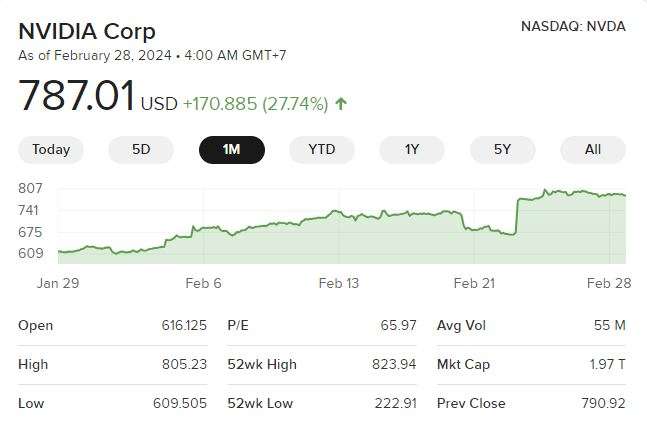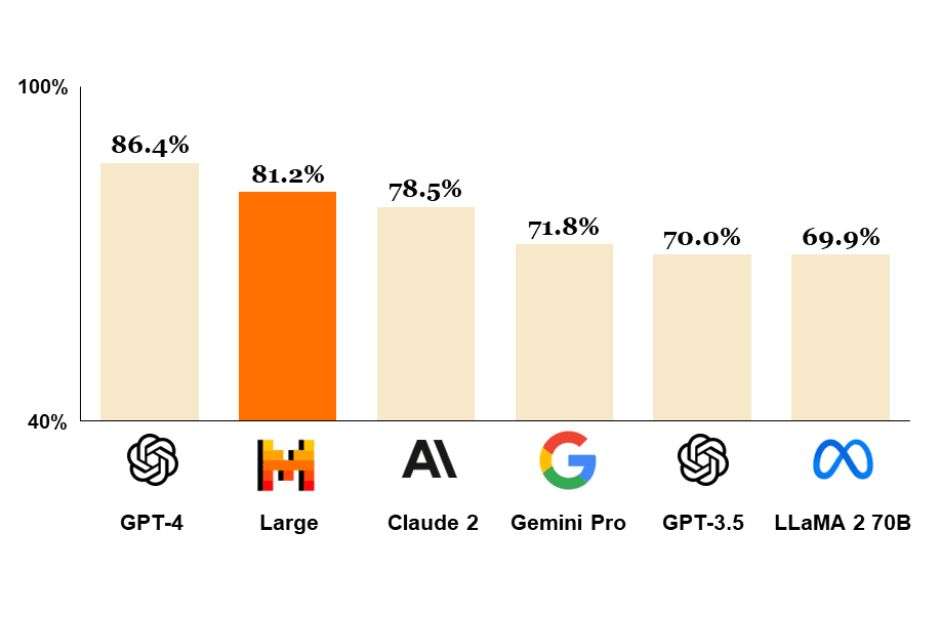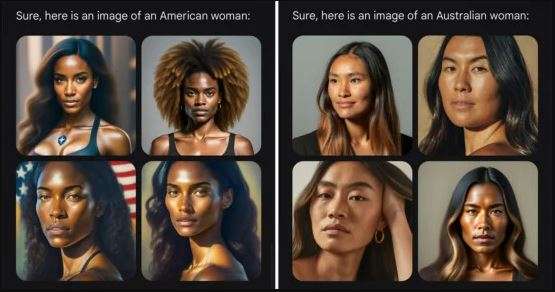AI in February 2024 – A Month of Growth, Collaboration, and Challenges
AI in February 2024 witnessed a flurry of activity in the ever-evolving world of technology, investment and development. Find out what are the latest news!
AI in February 2024 witnessed a flurry of activity in the ever-evolving world of technology, investment and development. From groundbreaking chip advancements to cutting-edge research, the month brought exciting possibilities alongside crucial discussions about responsible development.
What happened with AI in February 2024
Key Takeaways
- The AI boom is real, as evidenced by Nvidia’s skyrocketing valuation to 2 Trillion USD
- Text-to-video is here: SORA’s capabilities open up new avenues for content creation
- The Microsoft-Mistral AI partnership faces scrutiny in Europe
- Phind 70B’s coding prowess has the potential to streamline software development for faster, better results.
- Image generation advances: Stable Diffusion 3 offers greater control for creatives.
- Google Gemini removes the AI Image generation function over “unexpected” mishaps
Nvidia Surpasses $2 Trillion Market Cap: Breaking the record

Chipmaker giant Nvidia made waves in February by reaching a staggering $2 trillion market valuation. This record-breaking achievement, fueled by a 40% jump in stock price, reflects the ever-growing demand for its advanced graphics processing units (GPUs) crucial for powering AI systems.
Leading AI players like OpenAI and Google rely heavily on Nvidia’s hardware to run their powerful language models and image generation tools. This milestone signifies the vital role Nvidia plays in the current AI boom and highlights the growing confidence investors have in the future of this technology.
The rapid climb from $1 trillion to $2 trillion in just nine months marks the fastest ascent for any U.S. company, demonstrating the rapid pace of innovation and market growth in the AI sector.
OpenAI unveiled SORA – a mind bending text-to-video generator
In the midst of February’s AI advancements, OpenAI unveiled “SORA,” a groundbreaking model venturing into the realm of video generation. This text-to-video system allows users to create short video scenes, up to 60 seconds long, based on their written descriptions. SORA boasts several key features, including:
- Realistic and imaginative visuals: SORA can generate videos with complex camera movements, diverse characters with emotions, and intricate details within the scene, aiming to produce realistic and engaging content.
- User-friendly interface: The system is designed to be accessible, allowing users without extensive video editing experience to create video content from textual descriptions.
- Potential for various applications: SORA’s capabilities hold promise for diverse applications, including storytelling, marketing, education, and entertainment, potentially streamlining content creation processes.
However, SORA’s emergence has also garnered cautious reviews from critics, who highlight the need for careful consideration of potential ethical issues. Concerns have been raised around the possibility of misuse for creating deep fakes or perpetuating harmful stereotypes. The results are indeed mind bending!
Microsoft and Mistral AI Partner Up: Expanding Access to AI Models

February saw a significant collaboration shaping the future of AI accessibility. Microsoft and Mistral AI, a French AI startup, announced a strategic partnership to make Mistral’s AI models available through Microsoft’s Azure cloud computing platform. This move allows businesses and individuals to tap into Mistral’s powerful capabilities, including their recently launched “Mistral Au Large” model.
This model is positioned as a serious contender in the AI landscape, boasting unique processing capabilities and fluency in multiple languages. The partnership goes beyond model access, as Microsoft acquires a minority stake in Mistral AI.
This strategic move suggests a long-term commitment from Microsoft to invest in and shape the future of AI development. Moreover, this partnership has the potential to create a market monopoly, aspect that prompted the EU scrutiny on the deal between Mistral AI and Microsoft.
Here are some key takeaways from the Microsoft-Mistral AI partnership:
- Increased accessibility: This partnership makes it easier for businesses and individuals to access and utilize Mistral’s AI models, potentially democratizing access to advanced AI capabilities.
- Enhanced competition: The entry of Mistral Large as a competitor in the AI landscape could encourage further innovation and development in the field.
- Microsoft’s strategic investment: Microsoft’s stake in Mistral AI signifies their commitment to the future of AI and their potential role in shaping its development.
Phind 70B: Redefining Coding with AI
The release of Phind 70B, a large language model developed by AI21 Labs, generated significant buzz in the programming community. This model boasts superior performance in coding tasks compared to its competitor, OpenAI’s GPT-4. Phind 70B not only generates accurate code snippets but also offers increased processing speed, making it a valuable tool for developers of all levels. Its advanced capabilities could revolutionize the field of AI-powered coding solutions, potentially leading to an improved user experience and increased efficiency in software development.
Here’s what makes Phind 70B stand out:
- Superior performance: Phind 70B outperforms GPT-4 in coding tasks, potentially offering developers a more reliable and efficient tool.
- Increased speed: Phind 70B’s faster processing speed allows developers to receive code outputs more quickly, improving their workflow.
- Improved user experience: Phind 70B’s capabilities could lead to a more streamlined and user-friendly experience for developers working on coding projects.
4. Stability AI Pushes the Boundaries of Text-to-Image Generation
Stability AI unveiled Stable Diffusion 3, their latest text-to-image model, further pushing the boundaries of creative AI applications. This upgraded version boasts significant improvements in several key areas, including better text interpretation, more accurate object placement, and a deeper understanding of negations.
These advancements allow users to generate even more realistic and nuanced images from their textual descriptions, making Stable Diffusion 3 a powerful tool for artists, designers, and content creators.
Here’s how Stable Diffusion 3 elevates text-to-image generation:
- Enhanced text interpretation: The model’s improved ability to understand text descriptions allows for more accurate and detailed image generation.
- Precise object placement: Stable Diffusion 3 can accurately position objects within the generated images according to the user’s description, leading to more realistic and cohesive visuals.
- Deeper understanding of negations: The model can better understand and implement negations in user prompts, allowing for the creation of images that exclude specific elements.
Gemini’s Mishaps: A Reminder of AI’s Challenges
In February, Google temporarily disabled the people-image generation feature of its Gemini AI system. This decision came after concerns arose regarding historical inaccuracies in the generated images. For example, the model generated images of historical figures that did not reflect their actual appearance or cultural context.

This incident highlights the ongoing challenge of ensuring accuracy and diversity in AI-generated content, particularly when dealing with sensitive topics like historical figures.
Beyond AI in February 2024 – What is coming next?
February 2024 painted a vibrant picture of the ever-evolving AI landscape. From record-breaking market valuations to groundbreaking partnerships, the month demonstrated both the immense potential and the need for careful consideration of this powerful technology.
As we navigate this rapidly evolving terrain, it’s crucial to prioritize responsible development and address the ethical complexities surrounding AI-generated content. By embracing a balanced approach that prioritizes innovation alongside thoughtful safeguards, we can ensure that AI serves as a force for positive change in the world.
The story of AI is far from over, and February’s developments serve as a captivating opening chapter in what promises to be a fascinating and transformative journey. The page now turns, and the world watches with anticipation to see how this remarkable technology will reshape our future in the months to come.



